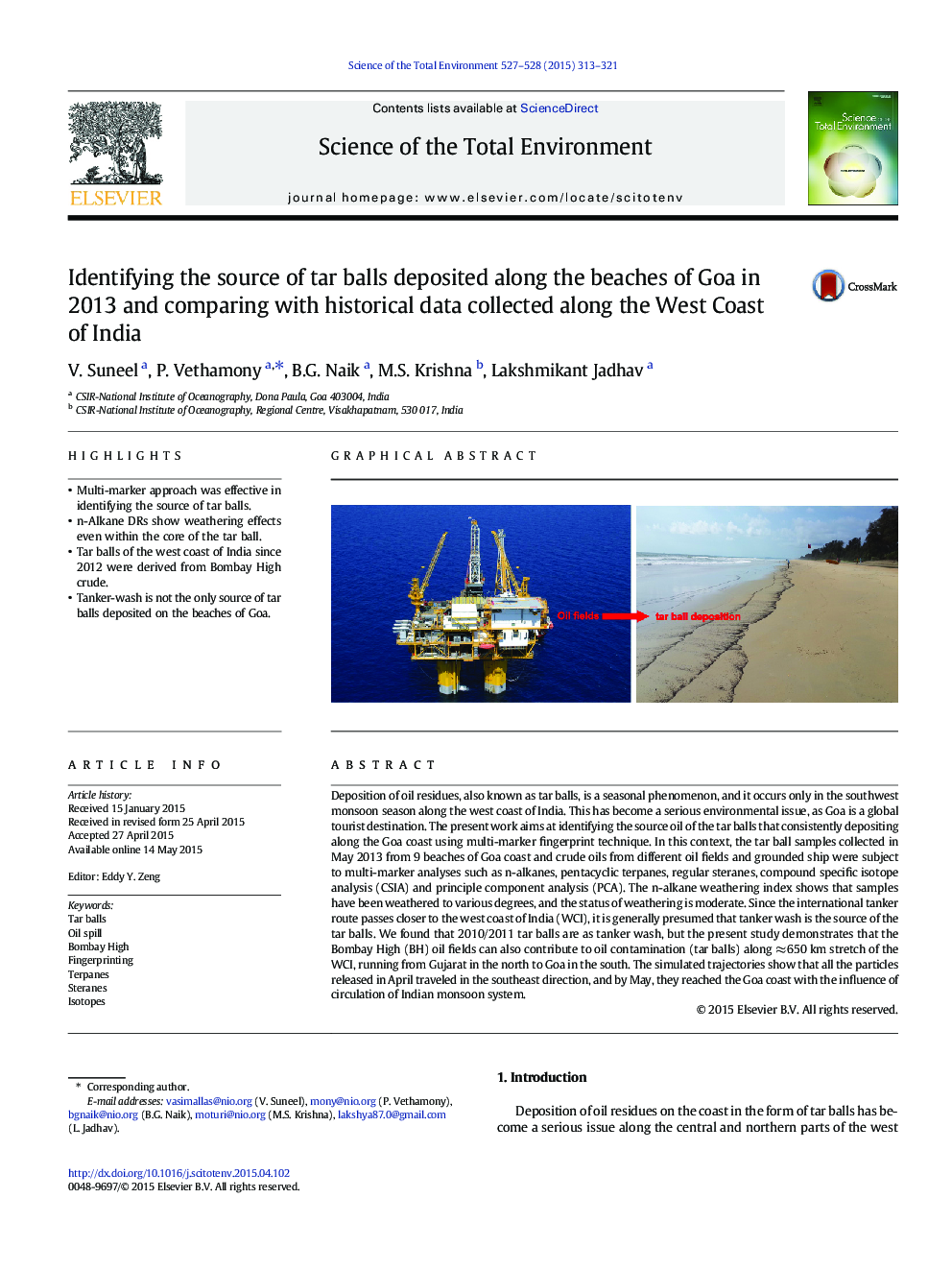| کد مقاله | کد نشریه | سال انتشار | مقاله انگلیسی | نسخه تمام متن |
|---|---|---|---|---|
| 6326480 | 1619755 | 2015 | 9 صفحه PDF | دانلود رایگان |
- Multi-marker approach was effective in identifying the source of tar balls.
- n-Alkane DRs show weathering effects even within the core of the tar ball.
- Tar balls of the west coast of India since 2012 were derived from Bombay High crude.
- Tanker-wash is not the only source of tar balls deposited on the beaches of Goa.
Deposition of oil residues, also known as tar balls, is a seasonal phenomenon, and it occurs only in the southwest monsoon season along the west coast of India. This has become a serious environmental issue, as Goa is a global tourist destination. The present work aims at identifying the source oil of the tar balls that consistently depositing along the Goa coast using multi-marker fingerprint technique. In this context, the tar ball samples collected in May 2013 from 9 beaches of Goa coast and crude oils from different oil fields and grounded ship were subject to multi-marker analyses such as n-alkanes, pentacyclic terpanes, regular steranes, compound specific isotope analysis (CSIA) and principle component analysis (PCA). The n-alkane weathering index shows that samples have been weathered to various degrees, and the status of weathering is moderate. Since the international tanker route passes closer to the west coast of India (WCI), it is generally presumed that tanker wash is the source of the tar balls. We found that 2010/2011 tar balls are as tanker wash, but the present study demonstrates that the Bombay High (BH) oil fields can also contribute to oil contamination (tar balls) along â 650 km stretch of the WCI, running from Gujarat in the north to Goa in the south. The simulated trajectories show that all the particles released in April traveled in the southeast direction, and by May, they reached the Goa coast with the influence of circulation of Indian monsoon system.
Journal: Science of The Total Environment - Volumes 527â528, 15 September 2015, Pages 313-321
